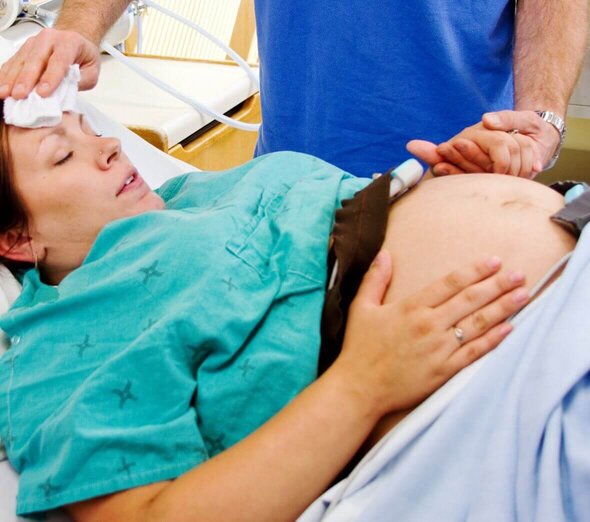

My first child was born by the Cesaren section. When my husband and I decided that we wanted to have another baby, I began to wonder if the next birth would follow the same course. To dispel these doubts, I asked my doctor about it.
I learned, that there is no single answer and you can not just predict the course of the second delivery. If a woman once gave birth by the Caesarean section, it does not mean that the next birth must be the same.
As I wrote earlier, the physician must take into account various factors before deciding that this time you can give birth in the natural way. Here they are:
- fetus size,
- woman's pelvis dimensions
- cervix
- scar after Cesarean section:
- time between the first and the second birth - you should wait about 2 years after the cesarean section because of the possibility of the scar rupture.
When:
Your doctor should:
- inform you about the increased risk and dangers,
- tell you about possible complications, e.g. uterine rupture,
- inform you about the medical back-up facilities that are necessary in this situation;
- CTG apparatus in the operating theatre used for checking fetal heart rate;
- sufficient blood reserves;the doctor and midwives should cautiously administer the oxytocin hormone. This hormone stimulates uterine contractions and may intensify them thus creating a risk of uterine rupture. Therefore, the use of epidural anesthesia should be carefully considered, as woman with uterine ruture who received this type of anesthesia would not notice and report any other pain than labour contractions.
These medical back-up facilities are necessary for the proper conduct of the delivery, if a woman previously gave birth by the Caesarean section. Otherwise, the mother's and baby's heath is at risk. During vaginal delivery the tasks of an experienced medical team include:
- constant monitoring and supervision of the mother, assessment of her condition,
- assessment of the fetus condition,
- evaluation of the labor progress
1. After the conversation you should consider whether you want to give birth naturally or you'd prefer the Cesarean section.
2. If you choose the vaginal delivery, you need to express your consent in writing (otherwise it is invalid).
3. Choosing the Cesarean section you must know you are entitled to it. Remember that the interval between the first and the second c-section shall not be shorter than 18 months. This gap is not as strictly observed as in the case of a vagina childbirth after the c-section, but it is important that a woman's body has time to regenerate.
Every woman is different - there are no rules here. Ideally, the scar heals for about 2-3 weeks. During this period, women should not be overburdened. In case of women after the Cesarean section, the old scar is excised during the next surgery. This prevents skin thickening and improves healing. This makes the suture look much better, although the process of the wound healing is very individual, and not all women have equally neat and invisible scars. At any rate you should observe the changes that occur during recovery.
You should consult your doctor if after the c-section you notice:
- thickening,
- redness,
- discharge oozing,
- pain,
- wound dehiscence,
- excessive bleeding.
This is another question that I asked the doctor. I planned on two children whereas my friend wanted to have three kids. We wondered whether the Caesarean section is a restriction in the family planning. Fortunately, it turned out not to be the case. Two or three children is the most common family pattern in our country. Of course we must remember that each new Caesarean section is more difficult for the doctor and it requires much experience, but it does not limit us on planning children. After the second c-section the third child should be born the same way, the vaginal delivery is not taken into account. After three c-sections you should carefully consider the decision about the next pregnancy, as it may be a threat to the pregnant woman and her child. In this case the decision to get pregnant should be consulted with your doctor.